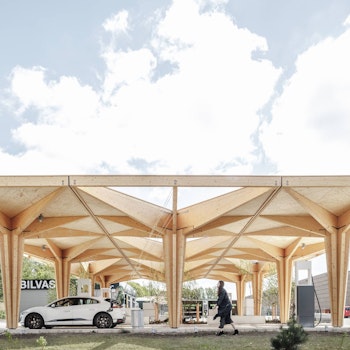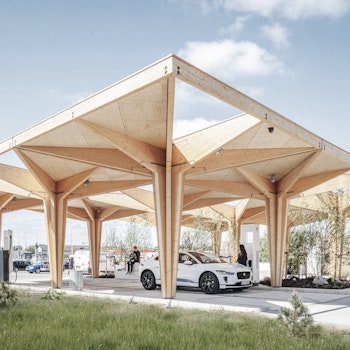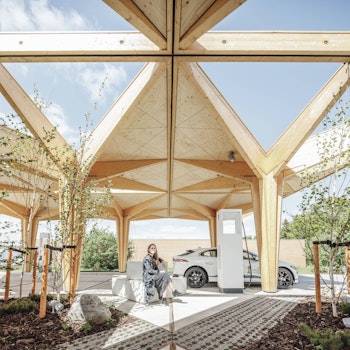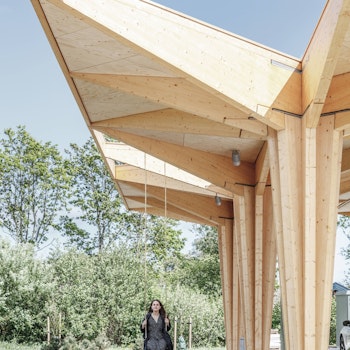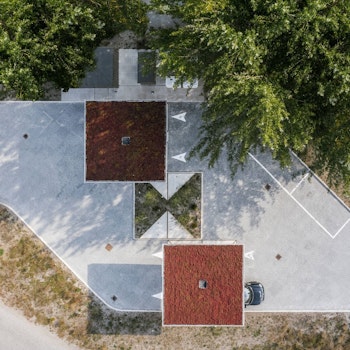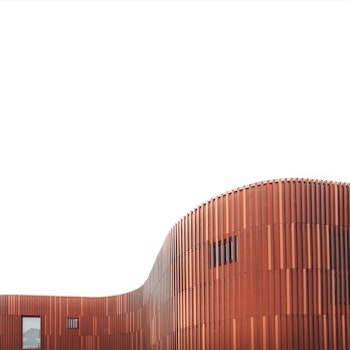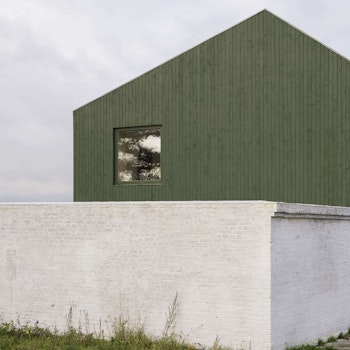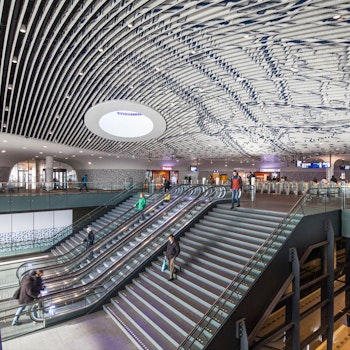ARCHITECT
COBE
The impact of electrified mobility will completely change how our cities look, feel and organize themselves in the future. According to WHO, 91% of the world’s population live in areas, where the level of toxins in the air exceeds recommended limits, and CO₂ emissions are out of control. This has led to a fundamental shift towards electrified mobility in smog-plagued countries like China and Brazil. While the carbon emission per kWh in Denmark had been reduced to 200 g per kWh by 2019 as a result of an increasing use of renewable energy sources, the introduction of electric vehicles (EVs) on a mass scale will have a large impact, reducing the carbon footprint of each car to only 20% of that of a car driving on fossil fuels. Cobe’s design for ultra-fast charging stations is based on a complete rethinking of the “mobility experience” driving an EV. The charging station should not only minimize the charging time but also create a meaningful break for the driver and passenger and inspire both the driver and other road users to change their habits. The station is designed with a modular approach that is scalable to match a rapid global shift in mobility patterns.
In a Danish context, electrified mobility is considered close to 100% clean. In 2020, an estimated 80% of the energy production in Denmark will be based on renewable sources with 50% from wind alone. Today, CO₂ emission is 200g per kWh, while an average EV travels seven km per kWh.
Ford revolutionized the market for privatized mobility in 1903 with the Model A assembly line. Today, car companies are undergoing a similarly dramatic transition to become mobility providers based on electrified alternatives to meet the growing awareness of and demand for sustainable alternatives. In Norway, more than 15% of all registered cars and 60% of all new ones are pure EVs or plug-in hybrid models. When this trend expands globally, our cities and infrastructural landscapes will change completely.
The charging stations are an oasis far away from the noise and pollution of the traditional fossil fuel-based gas stations. The light wooden canopy modules in combination with small areas of urban nature offer break from the surrounding busy infrastructural landscapes and a chance to recharge one’s mental batteries as well.
Cobe developed an ultra-fast charging station modular kit including structural components as well as surface and landscape elements scalable for different contexts and conditions. The canopy is constructed for future disassembly to enable reuse and upcycling of materials as needed.
Traditionally, the gas station has been dominated by hardscape asphalt surfaces. The clean charging technology offers an unprecedented potential for a much cleaner environment as there are no toxic fumes or oil leaking onto the paving.
The future of electrified mobility has the potential of offering a much greener and stress-free “refueling experience” by bringing local trees and plants to the center of the station, thus supporting biodiversity and making each station unique.
The Ultra-Fast Charging Station is covered by a wooden canopy. Wood stores carbon. To produce 1 kg of wood, a tree consumes 1.47 kg of CO₂ and releases just over 1 kilogram of O2 into the atmosphere.
The green roof of the canopy is prepared for heavy cloudbursts, as it is designed to retain water and fitted with downspouts that lead the water to natural green seepage areas.
The charging station provides a meaningful and much needed break for the driver. A space to recharge your car in just 15 minutes as well as your own mental and physical batteries.
source: Office web
YOU MAY ALSO LIKE

